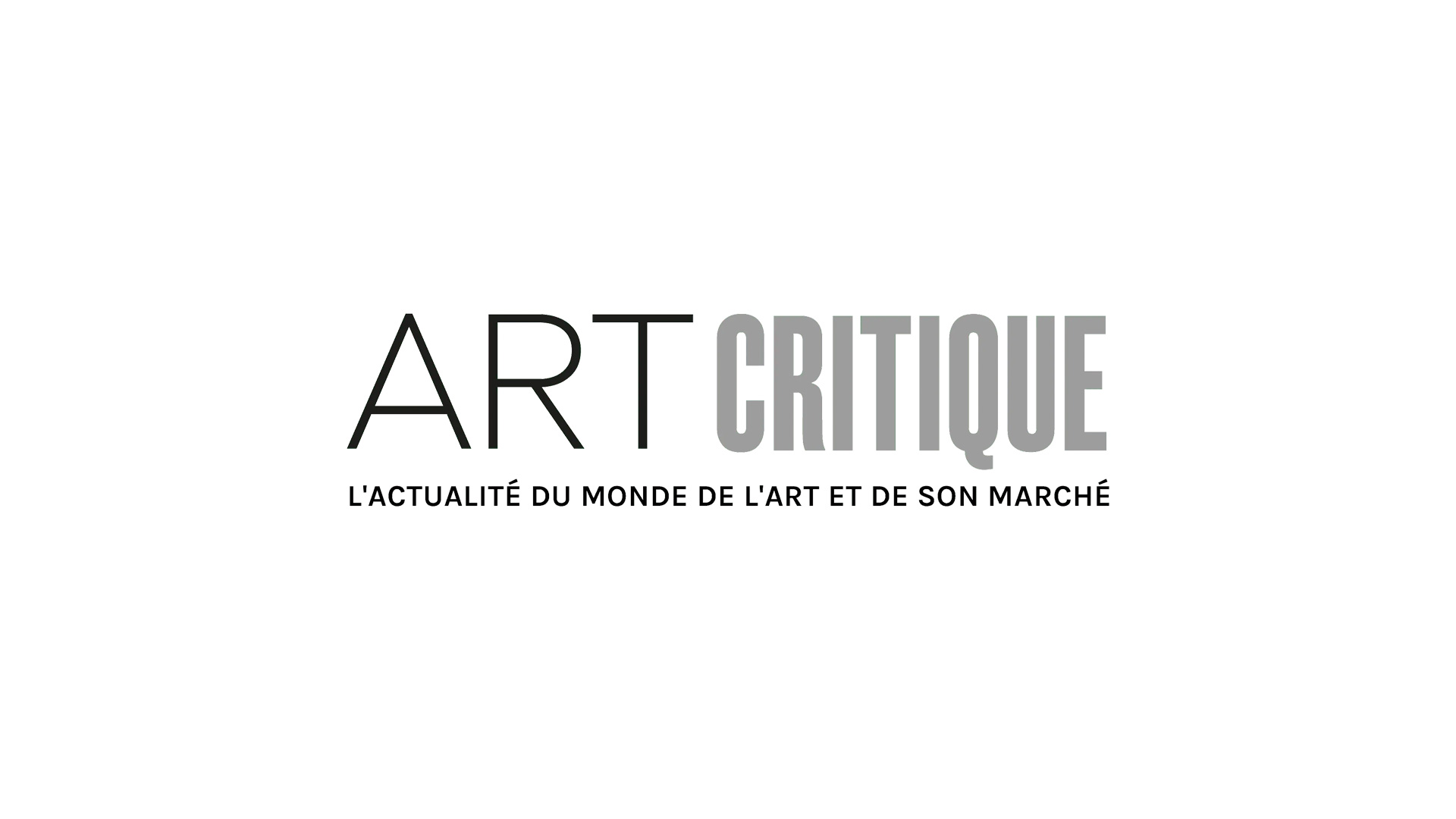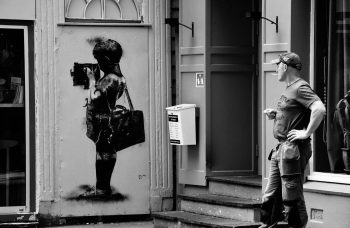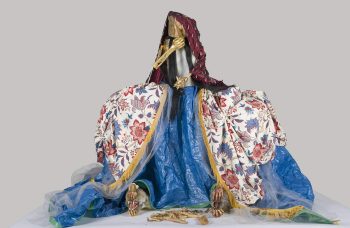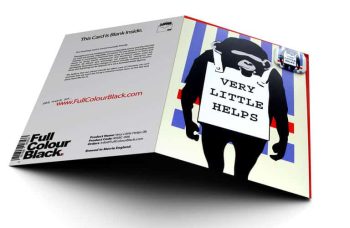Cutting up a $30,000 artwork might have some seeing spots at the mere thought of doing something so seemingly crazy. The faint of heart might want to stop there as that’s exactly what MSCHF, a Brooklyn-based collective of artists and designers, have done and it isn’t some quarantine-induced lapse of judgement (we see those at-home haircuts gone wrong!).
After purchasing one of Damien Hirst’s renowned spot paintings for $30,000, MSCHF opted to cut up the artwork for a project they’re calling Severed Spots. As a protest against investors pooling funds to purchase works resulting in fractionalized ownership, MSCHF cut out all 88 spots from Hirst’s 2018 L-Isoleucine T-Butyl Ester and sold them, individually, for $480 as part of a series titled “88 Spots.” In just a day, every 3.5-inch by 3.5-inch dotted square sold. As part of Severed Spots, MSCHF is auctioning off 88 Holes, the piece of paper signed by Hirst from which the spots were cut, with a minimum bid of $126,500.
In the project’s manifesto, MSCHF discusses issues around art being investments for world’s wealthiest. “Could there be a more tailor made [sic] vehicle for the affluent to store their wealth?” they ask. The manifesto goes on to lament the fate of many artworks that are bought as assets: storage. “From one owner to many – a distinction immaterial as long as the piece is destined for a storage locker in Gibraltar,” states MSCHF. Tongue in cheek, MSCHF recognizes the irony of one artwork being owned by many highlighted in Severed Spots. “The difference, of course,” writes the collective, “is that we’ve taken it literally and made a stop at the knife shop while we’re at it.”
Severed Spots is just the latest project by the collective, which was founded in 2016. Last year, you may well remember their part in The Persistence of Chaos, a laptop infected with six of the world’s most dangerous computer viruses, that sold for $1.35 million. The laptop was their first “Drop” (what MSCHF calls their projects). Their projects aren’t always what you might consider to be art but they bring entertainment and almost always come with a bit of shock value. From the Cuss Collar (Drop #15), designed to curse each time the dog wearing it barks, to AI that generates images of feet that can be texted straight to your phone (Drop #12 cleverly titled THIS FOOT DOES NOT EXIST). MSCHF has also dropped a browser extension designed to let you watch Netflix while appearing to be on a conference call (Drop #5 and a little less needed these days), a new edition of Times New Roman (Drop #3) that takes up more space, and a pair of Nike Air Max 97s dubbed Jesus Shoes (Drop #7) complete with soles containing holy water from the Jordan River.
Altering someone else’s work isn’t a new concept. In 1953, after a few years of wrestling with notions of what can be called art, Robert Rauschenberg erased a drawing by de Kooning and dubbed the new artwork Erased de Kooning. Late last year, performance artist David Datuna ate a banana at Art Basel Miami Beach that was part of Maurizio Cattelan’s artwork called Comedian. Though the work was not destroyed (the artwork’s certificate stated that the banana could be replaced without destroying the work), the stunt shifted the context of the artwork.
Hirst, known for pushing the boundaries of art, himself, has yet to respond to MSCHF’s work.








